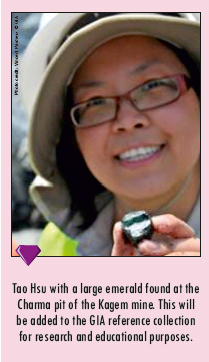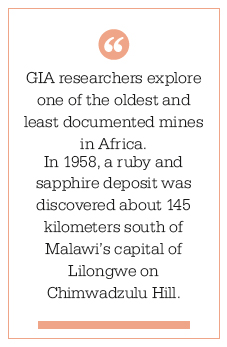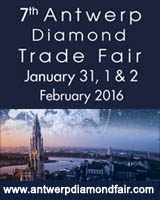|
|
Kafubu region is home to the world’s largest emerald mining operation
research team. “I’ve visited numerous colored gemstone mining operations throughout the world, but one of this size, modernization and organization really gives a visual of the changes that may be coming to our industry,” said Lucas. “Standing in front of the pit is like looking at a geological textbook,” added Detroyat. By combining an understanding of the geology with professional mining methods, Gemfields has turned Kagem into a profitable operation. In July 2009, its first high - grade rough emerald auction achieved $4.4 million, and in February 2014, $59.31 million. 
Along with a standardized grading system for emerald rough and an auction platform, environmentally sound practices and community out reach programs have revolutionized the mine -to- market gemstone business. In-pit dumping ensures that the environmental liability is kept as low as possible, while increased exploratory drilling, mapping of pegmatite and talc magnetite schist, resource calculations and mining software have improved the technical output of the mine. Following the visit to Kagem, Pardieu, along with Detroyat and Gruel, continued on to additional Zambian emerald mines to collect comparative samples. At the small mining operation of Musakashi in the Solwesi province, the team confirmed the existence of an emerald deposit with interesting internal features and color reminiscent of Colombian emeralds as reported in the summer 2014 issue of G&G. Meanwhile, several other operations in the Kafubu area, such as Miku, Dabuisha, Matenke and Benisa, are now run by Chinese companies. “It was fascinating to visit and study the Kafubu emerald mining area, one of the oldest gemstone producing areas is Africa, and to witness the challenges faced by the local miners. In comparison to other gems, emerald is very difficult to mine since it’s mainly mined from primary deposits and production is technically much more challenging,” said Pardieu. In keeping with its mission to ensure the public trust in gems and jewelry, GIA regularly conducts research field trips to important gem and jewelry centers around the globe, incorporating findings into research practices and education programs and providing information to the trade and public. GIA appreciates the access and information provided during these visits; however, they should not be taken as or used as a commercial endorsement. |





